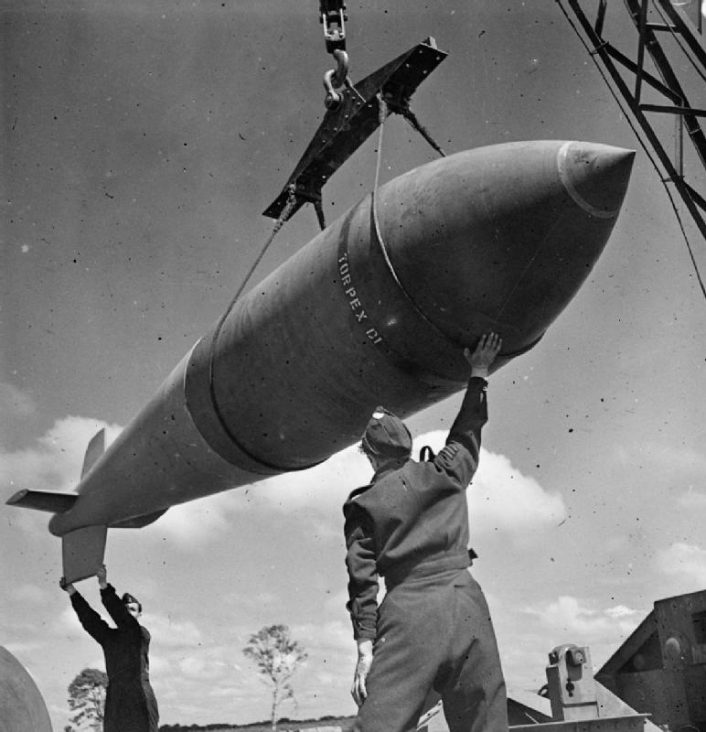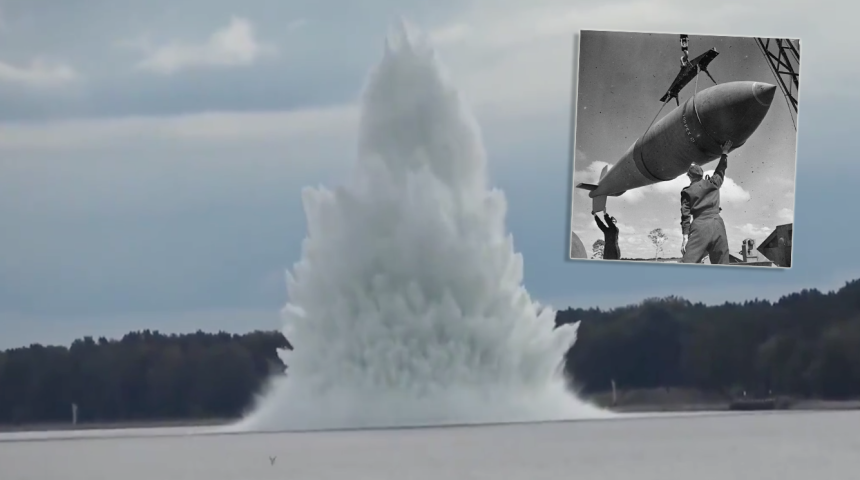“The deflagration process turned into detonation”.
Tallboy, the biggest unexploded World War II bomb ever found in Poland, dropped by a Royal Air Force Avro Lancaster in 1945, during the raid on the German cruiser Lutzow, has exploded underwater as Polish navy divers tried to defuse it, on Oct. 13, 2020. No one was injured in the explosion.
The weapon was found beneath the Szczecin-Swinoujscie shipping channel, a waterway leading to the port of Szczecinin, in northwestern Poland, during work to deepen the passage, in September 2019.
The activity, the first conducted underwater on a bomb of that size, was carried out by the 41st Mining Divers Group from the 8th Coastal Defense Flotilla.
#Tallboy, the largest unexploded #WWII bomb detonated💣
–
Lt Cmdr G.Lewandowski, 8th Coastal Defence Flotilla: The deflagration process turned into detonation. The object can be considered neutralised, it will not pose any more threat to the Szczecin-Swinoujscie shipping channel. pic.twitter.com/xHkRzAaONn
— Poland MOD 🇵🇱 (@Poland_MOD) October 14, 2020
The initial plan was to disarm the bomb by means of a small explosion but the weapon eventually detonated.
“We were prepared from the beginning that it could happen. The fact that it exploded does not mean that we have failed, quite the contrary. I can definitely say that the entire operation was successful – nobody suffered, neither people nor infrastructure”, said Paweł Rodzoś, director of the Department of Security and Crisis Management at the Medical University of Warsaw, according to the Polish media outlet Onet.
More than 750 people had been evacuated from the surrounding areas and the mine divers were outside of the danger zone at the time of the explosion.
Some residents of Szczecinin felt the blast, but according to the reports no one was hurt during the works. The infrastructure was not damaged either, even though divers will conduct a reconnaissance in the next few hours.
Od dziś do 16 października żołnierze #WojskoPolskie 🇵🇱 prowadzić będą neutralizację największej bomby lotniczej #Tallboy znalezionej na dnie Kanału Piastowskiego. W operację zaangażowane będą wszystkie jednostki 8. Flotylli Obrony Wybrzeża. pic.twitter.com/3iIluTPJwh
— Ministerstwo Obrony Narodowej 🇵🇱 (@MON_GOV_PL) October 12, 2020
Weighing 12,000 lb (5,400kg – including 2,400kg of explosive), Tallboy was an earthquake bomb developed by the British aeronautical engineer Barnes Wallis. As opposed to conventional bombs, an earthquake or seismic bomb did not explode at or near the surface, and destroy their target directly by explosive force but was designed to be dropped from high altitude so that it could penetrate and explode deep underground, causing intense shockwaves able to damage or destroy targets, such as bridges and viaducts, that would be difficult to hit and destroy with standard bombs.










